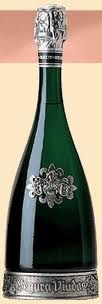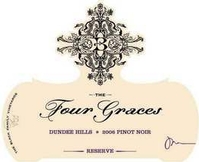It is about to begin, the long, hedonistic march through the holidays, beginning with Thanksgiving.
No other time of year inspires such passion for the grape. The great Champagne houses of France, for example, tally roughly half their annual sales in the United States between Thanksgiving and New Year’s Day. In the coming weeks the wine enthusiast and casual sipper alike will be barraged with suggestions and recommendations; well-intentioned advice meant to guide them to just the right wine no matter the occasion.
If you love wine, if you drink wine, if you might possibly make a gift of wine, you are in the crosshairs. Everyone in the wine business wants you.
 This is especially true in the run-up to the Thanksgiving feast, which is the most wine friendly of all the traditional holidays. That’s because a roast turkey, the staple of Thanksgiving tradition, is extremely versatile – an excellent match with either red or white wine.
This is especially true in the run-up to the Thanksgiving feast, which is the most wine friendly of all the traditional holidays. That’s because a roast turkey, the staple of Thanksgiving tradition, is extremely versatile – an excellent match with either red or white wine.
What’s more, the combination of sweet (cranberry sauce, candied sweet potatoes) and savory (earthy stuffing, gravy, mashed or roasted potatoes) side dishes open up endless possibilities for pleasing wine pairings. Which brings me to my most important point on the subject of wine selection for the Thanksgiving feast: Don’t be afraid to serve the wines you like because, in most cases, you will find that it works.
That goes against the conventional wisdom that for years has held that Beaujolais, the fruity red wine of southern Burgundy, is the perfect accompaniment to Thanksgiving. Beaujolais is a good choice, the safe choice, but certainly not the only choice.
In my humble opinion, serving multiple wines at once, both red and white and occasionally sparkling, is the only way to fully address the diverse flavors and aromas presented by the traditional Thanksgiving feast. With that in mind, I offer a few suggestions and recommendations based upon my experience as the wine source for more family gatherings at the Thanksgiving table than I care to remember.
SPARKLING WINE
 Thanksgiving is not the occasion for expensive Champagne or domestic bubbly of that ilk. At the Thanksgiving feast I serve bubbly as an aperitif or with dessert, and occasionally during the meal. Prosecco from Italy and cava from Spain are ideal in this circumstance. These are delicious sparkling wines that are affordable and thus perfect for a crowd of any size.
Thanksgiving is not the occasion for expensive Champagne or domestic bubbly of that ilk. At the Thanksgiving feast I serve bubbly as an aperitif or with dessert, and occasionally during the meal. Prosecco from Italy and cava from Spain are ideal in this circumstance. These are delicious sparkling wines that are affordable and thus perfect for a crowd of any size.
Cava, the traditional sparkling wine of Spain, has been on the rise in recent years due to ongoing improvements in quality combined with affordability. The Segura Viudas Brut Cava Reserva Heredad, Spain ($20) is especially attractive because it’s delicious and beautifully packaged in a uniquely shaped bottle with metal trim. The current release won a gold award at the recent Sommelier Challenge wine competition. Other cava awarded honors by the sommeliers: Freixenet Elyssia Pinot Noir Brut Cava, ($18) and Vilarnau Brut Cava ($15).
Prosecco, too, has enjoyed renewed interest tied to improving quality and affordability. Produced in Italy’s Veneto region just outside of Venice, Prosecco is usually made in a brut or extra dry style, lending itself nicely to the sweet and savory nuances of the Thanksgiving feast. These three are all excellent selections for the price, and all were honored with medals at the Sommelier Challenge: Cupcake Prosecco DOC ($14), Stellina di Notte, Prosecco DOC ($14) and Voveti Prosecco DOC, ($18).
WHITE WINE
 The Thanksgiving feast provides a perfect foil for Chardonnay, especially those from California that exhibit riper flavors and an oily texture. This is where the spice nuances that are a direct result of barrel fermentation and aging come into play. Thanksgiving faire is inherently spicy, often on the sweeter side, and this plays nicely with Chardonnay.
The Thanksgiving feast provides a perfect foil for Chardonnay, especially those from California that exhibit riper flavors and an oily texture. This is where the spice nuances that are a direct result of barrel fermentation and aging come into play. Thanksgiving faire is inherently spicy, often on the sweeter side, and this plays nicely with Chardonnay.
Oregon Pinot Gris, spicy Gewurztraminer and zesty Riesling work well, too. I try to avoid lighter whites such as Pinot Grigio because those wines often won’t stand up to the strong flavors of Thanksgiving.
My go-to Chardonnay in this situation is the wonderfully balanced Bourchaine Chardonnay made by legendary winemaker Mike Richmond, who was a pioneer in the Carnerous region of the Napa Valley, where Bouchaine is located, more than 30 years ago. Bouchaine’s 2010 Estate Chardonnay ($30) was a gold-medal winner at the Sommelier Challenge and represents Richmond’s deft hand with this grape at its finest. For the bargain hunter who wants to pay less but still maintain high quality, the Rodney Strong 2010 Estate Chardonnay, Chalk Hill ($20) is a good bet.
My sleeper white wine won’t be easy to find, but it would be well worth the effort if you could snag a bottle of the 2011 Dr. Konstantin Frank Gewurztraminer Reserve, Finger Lakes ($25). This is a dry gewurz with spice and floral notes on the nose, a rich, oily texture and tremendous length. Unlike most dry gewurz, it does not finish with a bitter aftertaste. The Finger Lakes region of upstate New York is a dynamic region for the Alsatian grape varieties Gewurztraminer and Riesling.
If you enjoy Pinot Gris, you must try the 2011 Handley Cellars Pinot Gris, Helluva Vineyard, Anderson Valley ($20). The quality of the wine definitely matches up to the name of the vineyard. Riesling to seek: Kilakanoon 2011 Riesling, Mort’s Reserve, Clare Valley, Australia ($35).
RED WINE
 For many wine enthusiasts, the reds are the main event. This is where I often dip into my cellar and reach for something I’ve been saving for a special occasion.
For many wine enthusiasts, the reds are the main event. This is where I often dip into my cellar and reach for something I’ve been saving for a special occasion.
That’s often older Bordeaux or an older Cabernet Sauvignon. Neither would be my first instinct if the wines were young because youthful, tannic reds are usually too strong for the delicate flavor of turkey. But older vintages that have mellowed can be just right.
If you are going to drink young reds, best to stick with Beaujolais and Pinot Noir. Beaujolais is made from the Gamay grape and is frequently floral on the nose, shows soft tannin, and bright, juicy fruit on the palate. Georges Duboeuf is the leading purveyor of Beaujolais in the United States, though top Burgundy negociants such as Maison Louis Jadot and Joseph Drouhin also bring top-notch Beaujolais to the U.S. market. Know that the 2009 and 2010 vintages were exceptional in Beaujolais and the prices remain good despite the acclaim. Beaujolais from any of these three producers will prove satisfying as well as affordable.
The focal point of my Thanksgving feast will be Pinot Noir from Oregon and California.
In recent years the Pinot Noir from Oregon’s Four Graces has been some of the finest produced in the U.S. My favorite of the Four Graces Pinots tasted over the past year is the Dundee Hills Reserve ($45), a rich, full-bodied Pinot that exhibits complex layers of red and black fruits. This wine won a platinum award at the Critics Challenge in May.
NASCAR legend Jeff Gordon also impressed this year with the 2009 Jeff Gordon Cellars Pinot Noir, Sonoma Coast ($56), which tied for best pinot noir at the Sommelier Challenge. The other top Pinot at the Sommelier Challenge was the 2011 Acacia Pinot Noir, Carneros ($28). The Acacia shows more flavor in the red-fruit range, the Jeff Gordon more in the black-fruit range, so you can pick your poison.
Follow Robert on Twitter at @wineguru.
8
